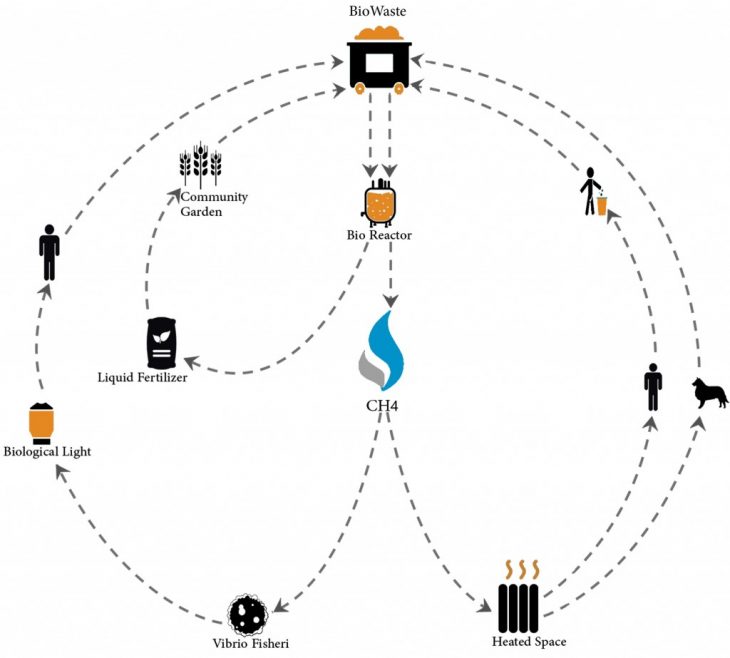Global Warming! It is a word which isn’t given much significance unless there is an unexpected rainfall, or an unusual temperature drop or a Tsunami! What we don’t realize is that Global Warming is a phenomenon that has been happening for many decades now, just the results of it are being visible recently. And it goes without saying that we humans, our technology and greed are among the major reasons for this. The energy and resources we utilize in our daily lives is contributing to global warming.
One of the major factors of Global warming are the green-house gases like Carbon Dioxide, Nitrous Oxide, Ozone, Methane, etc. The requirement of these gases in the atmosphere is inevitable, but excess of it can be equally harmful. Many are under the impression that Carbon Dioxide is one of the most harmful off the lot, but there is a gas which is more harmful than CO2. – Methane. It can trap 30% more heat than CO2!
The amount of Methane in the atmosphere is increasing on a daily basis. Among the numerous ways of methane production, the major producer is the food waste and landfills. Landfill gas is composed of 40-60%, methane, remainder carbon dioxide and traces of other gases. If the waste disposal is not planned out and executed with this fact in consideration, the rate of global warming would only increase.
The Food and Agriculture Organization of the United Nations (FAO) estimates that, each year, one-third of all food produced for human consumption in the world (around 1.3 billion tons) is lost or wasted. This includes 45% of all fruit and vegetables, 35% of fish and seafood, 30% of cereals, 20% of dairy products and 20% of meat. Most of this wastage occurs in the developed world; per capita food waste by consumers in Europe and North America is around 95-115kg per year, compared to just 6-11kg in sub-Saharan Africa and South/South-East Asia.
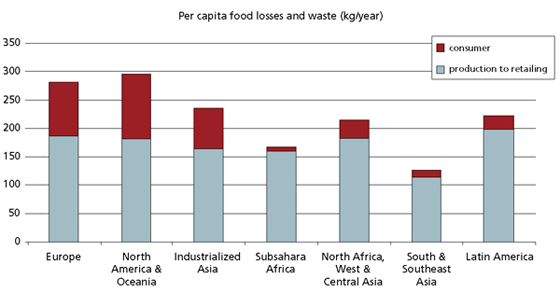
Turning waste into a resource is one key to a circular economy. The objectives and targets set in European legislation have been key drivers to improve waste management, stimulate innovation in recycling, limit the use of landfilling, and create incentives to change consumer behavior. If we re-manufacture, reuse and recycle, we can move to a more circular economy where waste is eliminated and resources are used in an efficient and sustainable way. Improved waste management also helps to reduce health and environmental problems, reduce greenhouse gas emissions (directly by cutting emissions from landfills and indirectly by recycling materials which would otherwise be extracted and processed), and avoid negative impacts at local level such
as landscape deterioration due to landfilling, local water and air pollution, as well as littering.
As it stands today, the majority of our garbage ends up in landfills. This is expected to change over the course of the 21st century as recycling facilities and waste-to-energy plants become far more cost-effective. Consumers in general are also becoming more conscientious of their carbon footprint and the amount of food and other resources wasted every day. Perhaps in the future, there will just be one answer to the question of where our trash goes: the recycling center
By reducing the amount of organic waste in such landfills, we are cutting off the production of methane at one of its major sources. Such steps, if taken by many, would help in the reduction of methane, a major green-house gas, in the atmosphere, to a great extent.
The Project
Recycling of waste using bio-digesters is not an unknown concept. It is one that has not been taken seriously even with all these environmental issues going on. Using organic wastes to produce methane (which would also otherwise be produced, but at a lower rate), in a more controlled space, rather than being let into the atmosphere, is something that can be done in both small scale (individual houses) as well as large scale (bio-gas plants).
M.A.P. S. is a project that is a result of an idea to convert trash into energy, which would help to activate a public space in an interactive manner. We wanted to create a cyclic system which converts organic matter to a bio-fuel that helps bring a change in the social as well as climatic conditions of an area. Therefore, we proposed the implementation of a Biodigester system in the
neighborhoods, where it can be a part of the community. Once setup, the system can be run by the people and also the results be used by them. In this project we have dived into the different ways methane can be utilized by a neighborhood. This research lead us to the utilization of methane in three different ways.
The first being the obvious – Cooking. But as a means of bringing the community closer, we provide public gas outlets, which the people can use for an outdoor lunch or a barbecue night! These outlets are apart from the individual connections to the individual households of the neighborhood. The second is to have a space with copper tube – frameworks with hot water
passing through it thereby heating up the space around it. Here methane is burned to heat the water. The third and an interesting use of methane is to feed a particular type of bacteria (Vibrio Fischeri) and an algae (Pyrocytis Microalgae) which have bio-luminescent character.
Phenomena
Anaerobic Digestion
Anaerobic treatment (digestion) is a proven way and efficient method to produce biogas (methane) that can be used for the production of renewable heat and power and a compost like output. The principle of anaerobic treatment is the utilization of anaerobic bacteria (biomass) to convert organic matter (pollutants) or COD (chemical oxygen demand) into methane rich biogas in the absence of oxygen.
Anaerobic digestion is an attractive option for waste treatment practice in which both energy recovery and pollution control can be achieved. Anaerobic degradation or digestion involves the breakdown of biomass by a concerted action of a wide range of microorganisms in the absence of oxygen. The biological processes are essentially used to remove contaminants, in wastewater treatment, and nowadays many biological treatment options are available and have shown encouraging results over the treatment of complex organic matter.
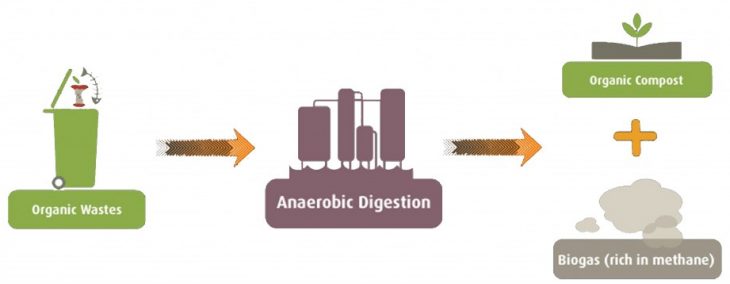
Comparing between anaerobic and aerobic process, anaerobic process is especially considered as a suitable treatment option due to low-energy requirements and little quantities of sludge production. Therefore, anaerobic process has become increasingly demanding in the treatment of complex industrial wastewater, which may contain toxic materials, or even low concentrations of domestic wastewater.
The four key stages of anaerobic digestion involve hydrolysis, acidogenesis, acetogenesis and methanogenesis. The overall process can be described by the chemical reaction, where organic material such as glucose is biochemically digested into carbon dioxide (CO2) and methane (CH4) by the anaerobic microorganisms.
Bio-Luminescence
Bioluminescence is the production and emission of light by a living organism. It is a form of chemiluminescence. Bioluminescence occurs widely in marine vertebrates and invertebrates, as well as in some fungi, microorganisms including some bioluminescent bacteria and terrestrial invertebrates such as fireflies. In some animals, the light is bacteriogenic, produced by symbiotic organisms such as Vibrio bacteria; in others, it is autogenic, produced by the animals themselves.
In a general sense, the principal chemical reaction in bioluminescence involves some light-emitting molecule and an enzyme, generally called the luciferin and the luciferase, respectively. Because these are generic names, the luciferins and luciferases are often distinguished by including the species or group, i.e. Firefly luciferin. In all characterized cases, the enzyme catalyzes the oxidation of the luciferin. In this project we have incorporated two such organisms. Vibrio Fischeri (bacteria) and Pyrocystic microalgae (Algae).
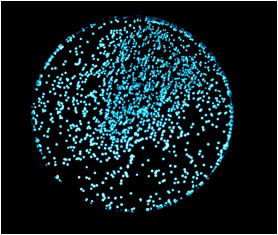

Vibrio Fischeri or Aliivibrio fischeri is a Gram-negative, rod-shaped bacterium found globally in marine environments.A. fischeri is found predominantly in symbiosis with various marine animals, such as the Hawaiian bobtail squid. Free-living A. fischeri cells survive on decaying organic matter. Pyrocystis is a genus of dinoflagellate. Its name derives from the Latin pyro, meaning fire, and cystis, meaning a hollow sac or cavity. Pyrocystis fusiformis only glows when disturbed, though, whether that be by a breaking wave, the swish of a swimmer’s hand, or the advance of a predator. In fact, its hypothesized that the reason dinoflagellates evolved the ability to glow at all is to avoid being eaten.
Elements & Technology
Bio-Digester
A Biogas digester or Bio-Digester is a simple system which produces biogas, via the natural anaerobic decomposition of organic material. The biogas digester, once its “starter culture” of methanogenic (CH4 producing) bacteria has been established (usually several weeks after initial loading) can be fed daily with kitchen and garden waste. The ecosystem of bacteria in the biogas digester extract energy from the organic material and generate methane gas.
The digested organic material or Digestate exits the system as a high-quality fertilizer in liquid form. This liquid anaerobic “compost” still contains all the minerals and other soil nutrients of the kitchen and garden waste, including the nitrogen that can be lost through aerobic composting.
Biogas systems can be built on any scale: small and simple for a single household, or large and industrial for a whole municipality. A basic biogas digester consists of a tank in which the organic material is digested, combined with a system to collect and store the biogas produced. The digesters can be quite simple, and the details vary depending on available materials and the needs of the community. The main sources of biomass are food scraps and kitchen waste. Non-woody garden waste is also appropriate.
The digester size can be defined as the total size of the biogas unit, which includes the effective size of any volume occupied by the fermented material and the volume of gas storage.
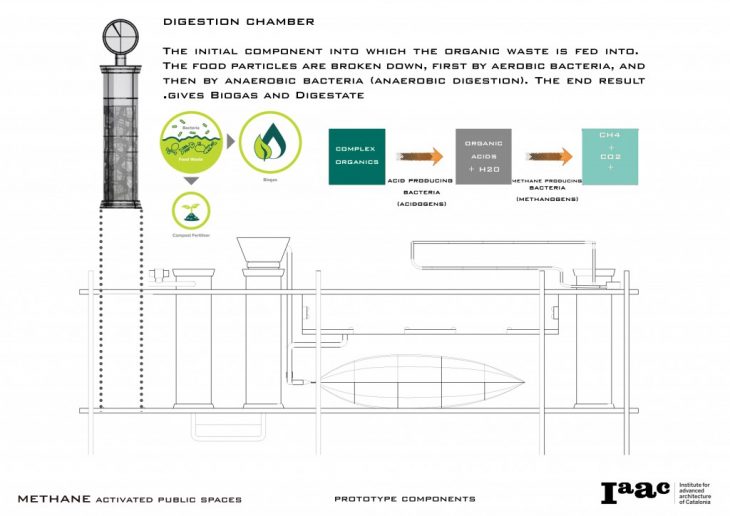
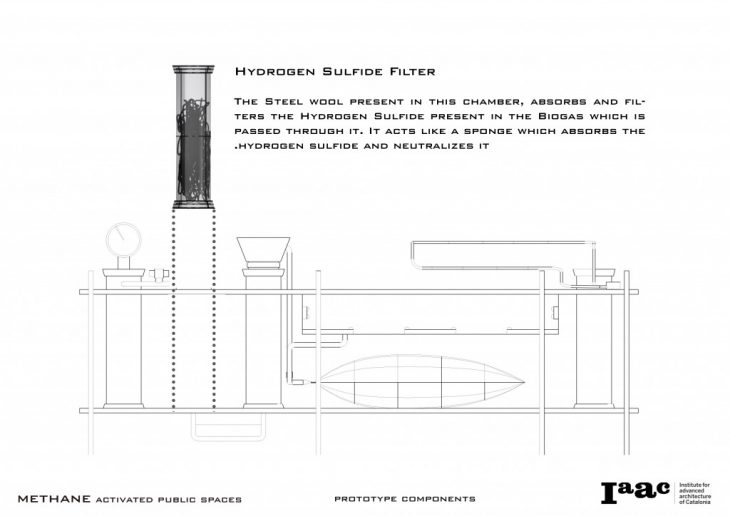
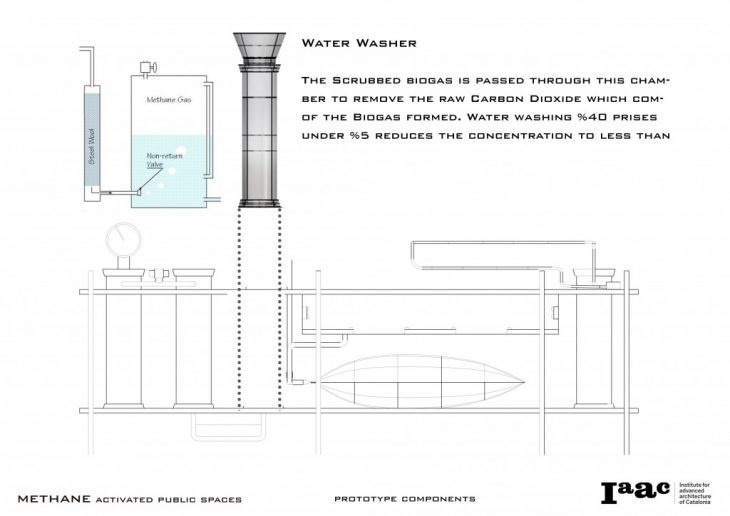
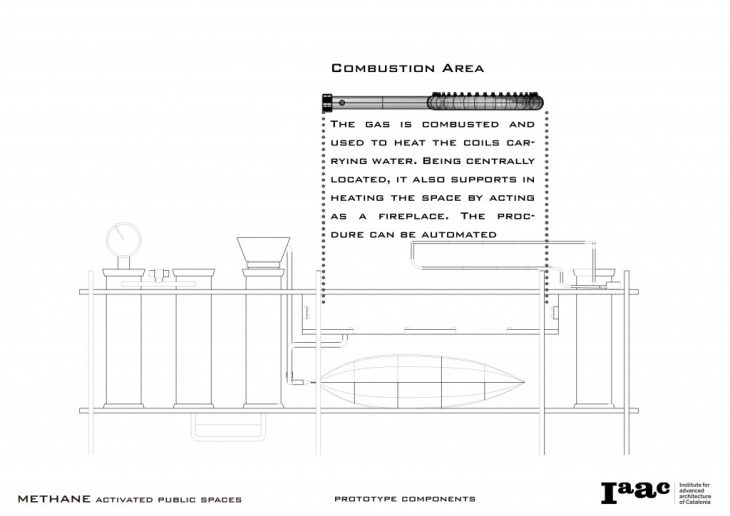

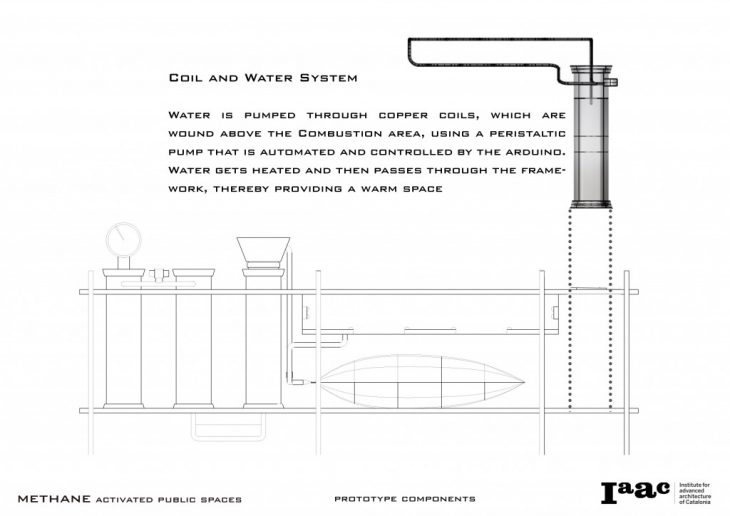
Cultivation of Organisms
Vibrio Fischeri can be fed the methane that is produced, while they require other nutrients such as agar, oxygen and compost. With the desired requirements sufficed, the bacteria grows in a quick rate. Once the culture is fully grown, it oxidizes the enzyme and produces light.
The Pyrocystic microalgae does not need much maintenance. They require saltwater and warmth. The heat emitted from the space suffices its requirements. Even the algae works on the same base. They glow when they are more in number.
These organisms are placed in the gaps of the framework, working as a mood-light while adding to the aesthetic of the space, thus making it an attractive gathering spot for the social gatherings of the neighborhood
Arduino Setup
The Heating Space is automated by an arduino sensor which is attached to it, that also acts like a switch. It senses the temperature of the space and switches on the heating device when the temperature drops below 23 degrees and switches off when more than 26 degrees. The automation reduces the responsibility of the users. The peristaltic pump is also connected to an arduino circuit to run parellel to the heating device.

Working
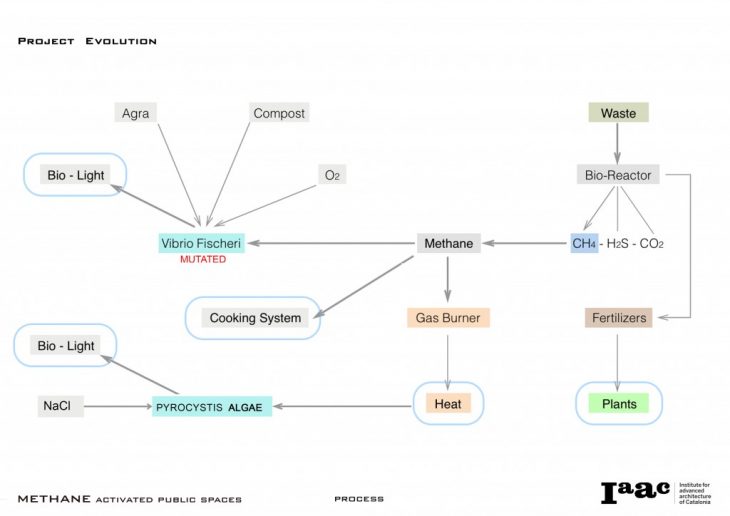 The people would deposit organic waste into the biodigester through a feeding tube, where it gets broken down to form Bio-gas and Digestate. The digestate is taken out through a different outlet and used as fertilizer or soil conditioner for the Community Garden. Simultaneously, the biogas undergoes Scrubbing to filter out H2S that gives the rotten egg smell to it. Next, the gas is washed with water to remove the raw CO2 which is 40% of the Biogas. The methane gas which is filtered out is used for three major purposes.
The people would deposit organic waste into the biodigester through a feeding tube, where it gets broken down to form Bio-gas and Digestate. The digestate is taken out through a different outlet and used as fertilizer or soil conditioner for the Community Garden. Simultaneously, the biogas undergoes Scrubbing to filter out H2S that gives the rotten egg smell to it. Next, the gas is washed with water to remove the raw CO2 which is 40% of the Biogas. The methane gas which is filtered out is used for three major purposes.
1. Heating – Methane is burned to heat water which passes through copper tubes. This warm water runs through a tubular framework, while emitting the heat. The movement of the water is controlled by a peristaltic pump which is automated using an arduino. The frame structure keeps the space heated during the winter season, whereas during the summer, it is used as a shading device. The heat produced is also made use by the algae which emits light during the night.
2. Cooking – The gas has outlets that can be utilized by the public for outdoor cooking during social gathering. A portion of the gas produced is also circulated to the households for everyday cooking purposes.
3. Bio-luminescence – A small portion of methane is fed to cultures of a bacteria called Vibrio Fischeri, which when grown fully would also emit light like the microalgae. These bio-lights act as mood lights.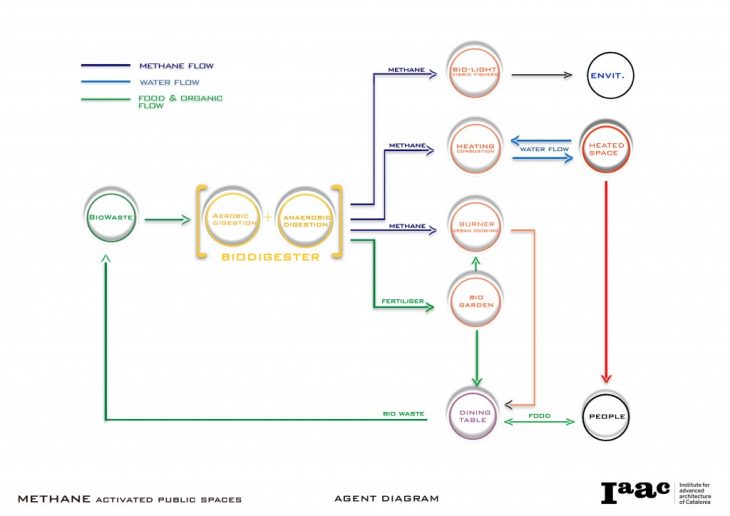
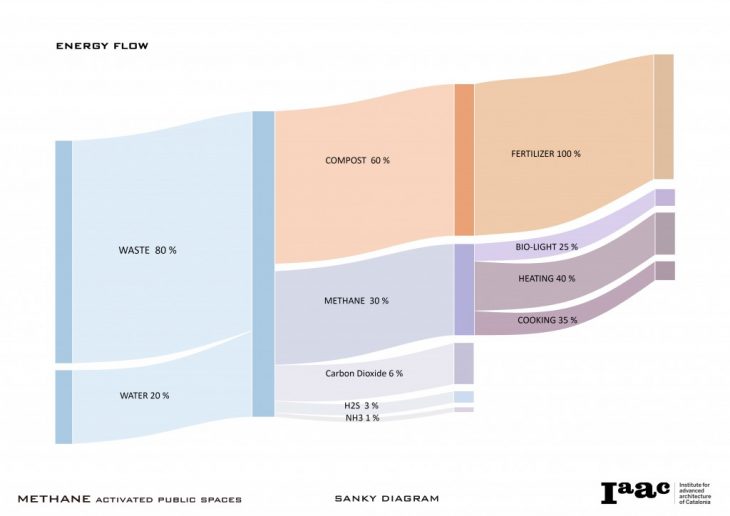
The system is continuous by having a weekly maintenance where the Digestate is removed from the chamber, to be utilized as fertilizer for the community garden, as the biomass moves through by the difference in hydraulic heat. A retention period of 14 to 20 days is needed for each batch that is added to the system. The organic waste from the Community garden and the households becomes the input to the system, making it cyclic.
Location
In Barcelona, Mediterranean city, compact and complex, the public space is a meeting and meeting place. And is that the streets, parks and squares of our environment are privileged spaces of exchange for the relationship, productivity, generation of knowledge or leisure.
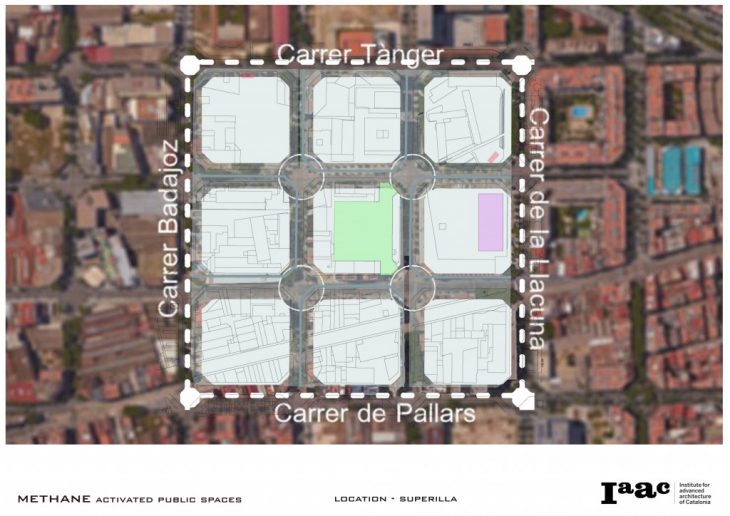 The Superilla located in Poblenou, was the location designated to us for the project. WIth a combination of nine blocks, the Superblock has four junctions, with streets that give importance to its pedestrians and for public life, while limiting the amount and speed of traffic into the heart of the superblock. Our project can be located in any of these junctions, but we preferred the East junction due to the proximity to three restaurants, which would be a major resource for the project. Location of a school and residences in the locality would only enhance the public interaction.
The Superilla located in Poblenou, was the location designated to us for the project. WIth a combination of nine blocks, the Superblock has four junctions, with streets that give importance to its pedestrians and for public life, while limiting the amount and speed of traffic into the heart of the superblock. Our project can be located in any of these junctions, but we preferred the East junction due to the proximity to three restaurants, which would be a major resource for the project. Location of a school and residences in the locality would only enhance the public interaction.
Users & Activities
Production
The food waste estimate in Europe alone is 95 to 115 kg per year per head. The food currently wasted in Europe could feed 200 million people. An approximate population of Superilla can be taken around 6,500. Taking an average of 100 Kg, the approximate food waste produced in Superilla alone would be 6,50,000 kg per year.
From 1000kg of bio-waste, an average of 125kg of bio-gas can be produced in a typical Biodigester. If so, then from 6,50,000 kg of waste produced in the Superilla, 81,250kg of bio-gas can be produced.
The amount of methane present in bio-gas is estimated to be 60%. From this we can calculate that 48,750 kg of methane can be produced from the Superilla in a year.
Agents Involved
Beneficieries

The beneficiaries of this project would be the people themselves, other living beings and the environment. It would enhance the vegetation of the place. It would improve the health of the users and the social structure of the neighborhood. The heated space would give the oppertunity for the people to spend time outdoors even during the winters. Pet owners would be able to take their pets outside for walks during cold nights and winters. But most importantly, the reuse of organic waste in a more productive way, would help reduce the amount of methane in the atmosphere. This in-exchange would reduce the amount of heat being trapped in the atmosphere, thereby reducing global warming.
Activities
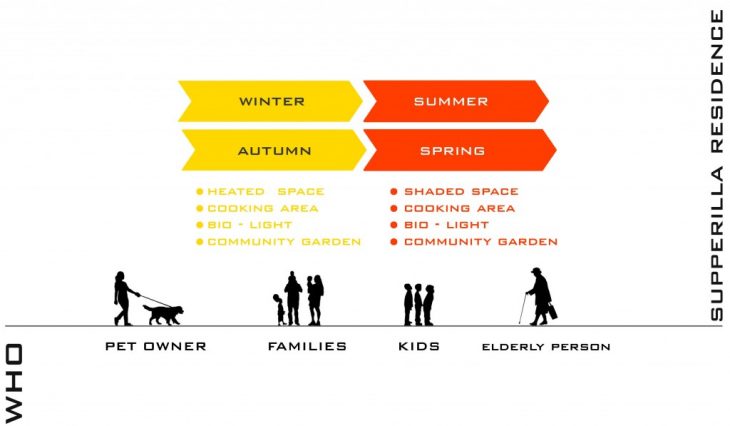
Prototype Evolution
STAGE 01
The first stage of the prototype was done to understand the main component of the project – the Biodigester. We used simple materials to create a digester, which had valves through which we could collect methane, if and when it formed.
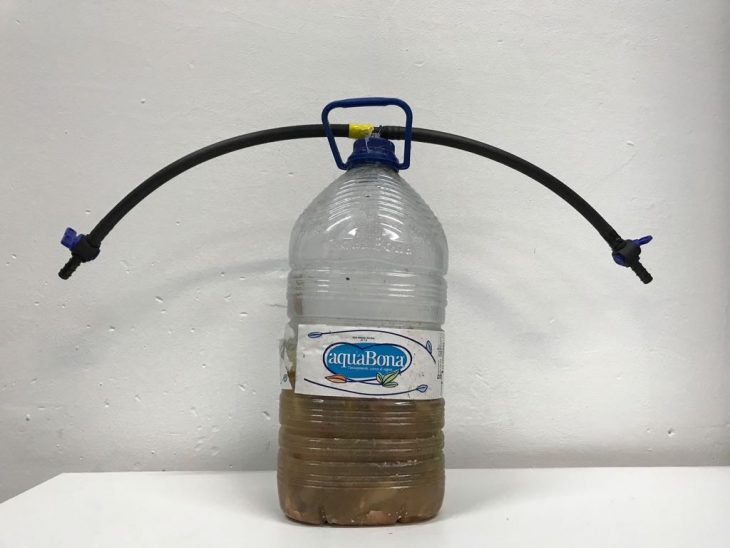
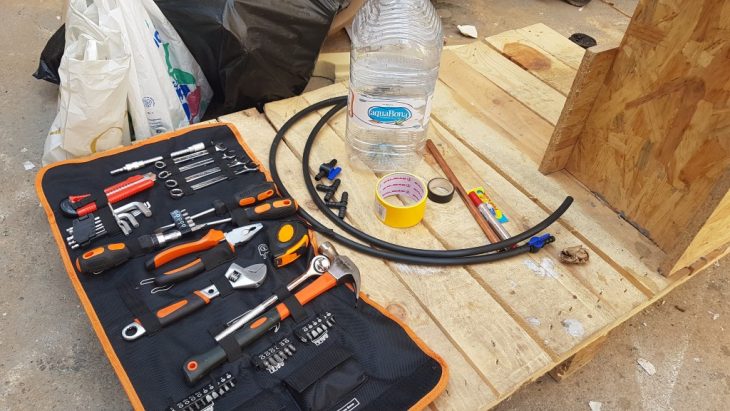
STAGE 02
In the Second stage, we looked into the supplementry chambers like the H2S scrubber and Water Washing chamber. The sizes that were possible and the mechanism of the chambers were our major concerns.
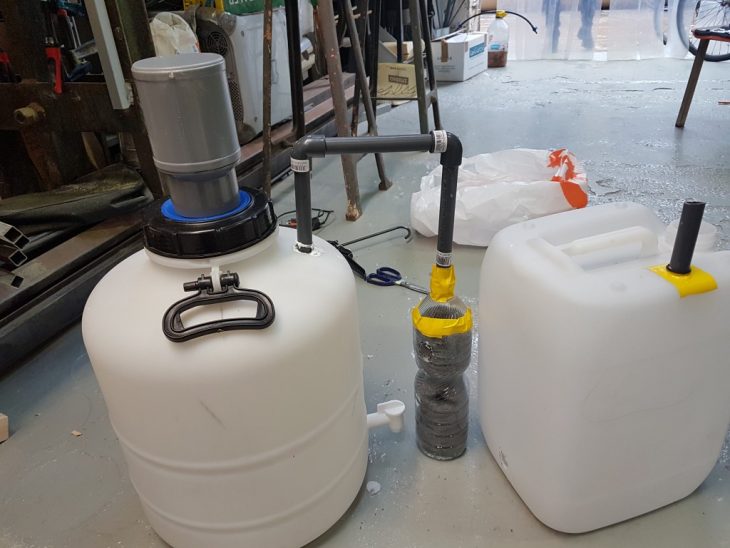
STAGE 03
In this Stage, we went into depth with respect to the types of connections to be made as safety was of a major concern in this project. We also developed the system further to the cooking outlet and heating chamber. The working of the sensors and pump system was also experimented on.

We also experimented on the composition of the digester. We tested three different combinations of organic waste. First was Meat with fruits and vegetables, second was Animal waste and third was fruits and vegetables alone. The first combination produced gave the quickest results. Therefore in our final prototype, we used the combination of meat, fruits and vegetables as the input.
Also the experiment with the arduino was a success, though we were limited to the extent to which we could go, due to requirement of complicated components.
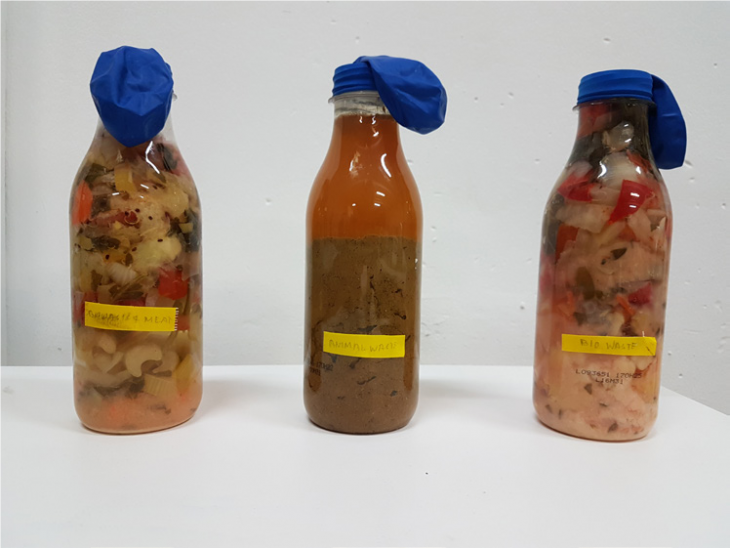

STAGE 04
The stage 04 Prototype, or the final Prototype made in the studio, was a combination of all the knowledge we gathered throughout the term. The aim of the prototype was to explain the project in an appelaing way, simplified enough to be understood by all, including the mechanisms, processes and connections.
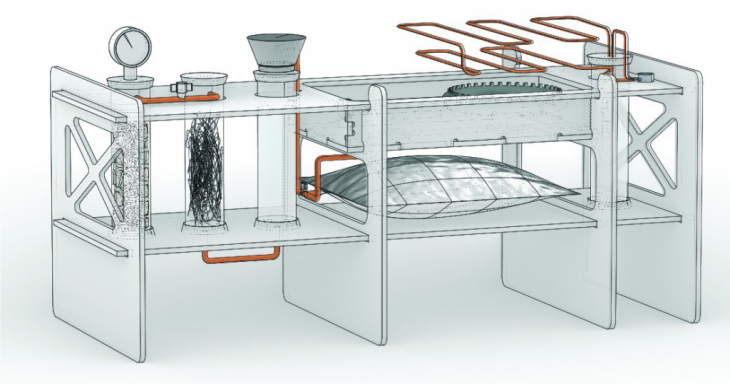
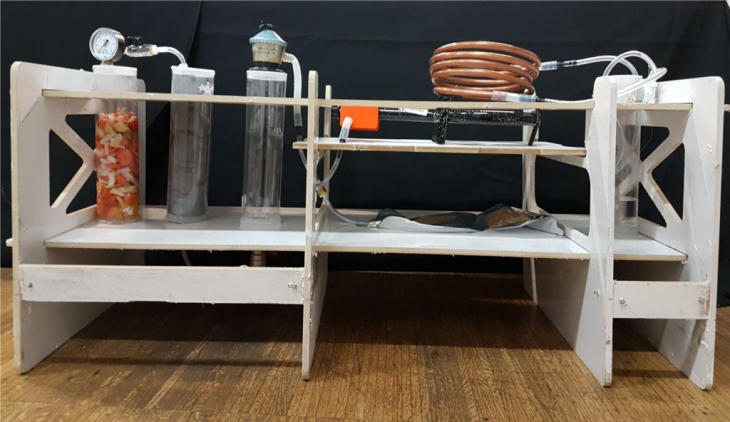
Final Design
Our design was based on an ‘Iceberg Concpet’, where the process of methane formation happens underground, while its usage is being done above the ground. The seating space has the framework carrying warm water above it in the form of a canopy. The patches in between are filled wit either Bio-light panels or heat reflective panels to keep the heat within. The concave shape of the canopy helps in holding the heat for longer.
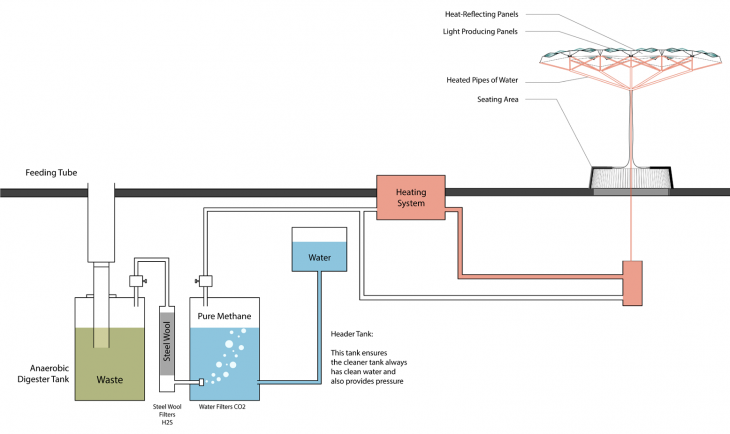
The design has multiple components added to it like the cooking counter and garden space apart from the heated seating area. They may appear detached on the exterior, but are all connected to each other with one component’s output being the other component’s input, thus completing the metabolic cycle.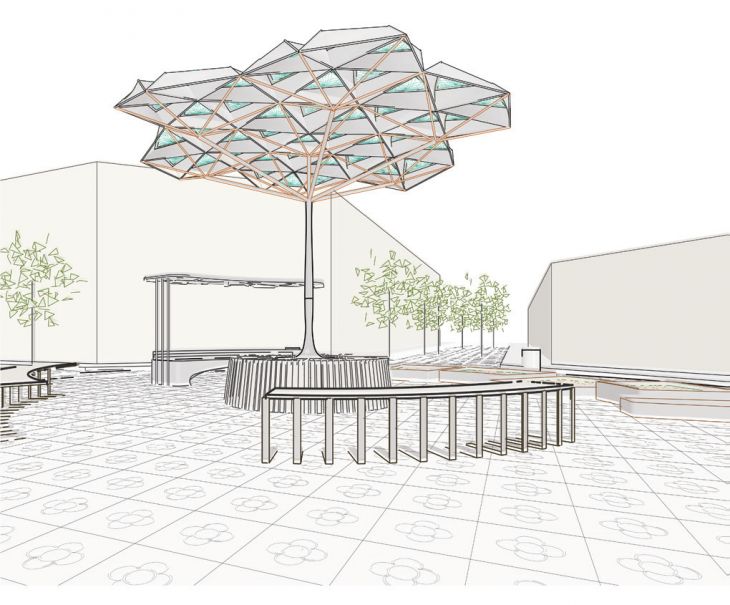
Vision
Social Impacts
The design helps to activate the public spaces, enhance the interaction between the public, by bringing them to the outdoors. It gives an opportunity for the people to be part of a system from which they, as well as the environment benefits. It not just improves the interaction between people, but also people and nature.
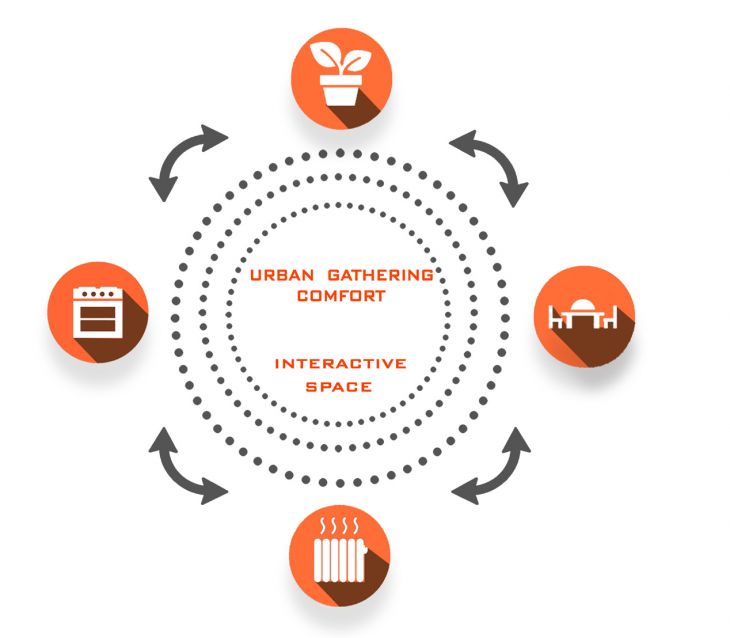
Climate Remediation
- Can replace the fossil fuels used for everyday purpose like heating and cooking, thereby preventing their depletion.
- Organic wastes which are dumped into landfills can be used productively, reducing the landfill area.
- Methane that escapes into the atmosphere from the decomposition of bio-waste, is made use of, thereby reducing the greenhouse gas in the atmosphere.
- Improving the micro-climate of the neighborhood, which helps in enhancing the social interaction.


Climate change is real, it is happening right now. It is the most urgent threat facing our entire species, and we need to work collectively together and stop procrastinating – Leonardo DiCaprio
M.A.P.S. is a project of IaaC, Institute for Advanced Architecture of Catalonia developed at MAA01 in 2017 by:
Student: Maya Mohan, Rim Youssef and Soroush Garivani
Faculty: Javier Peña , Oriol
